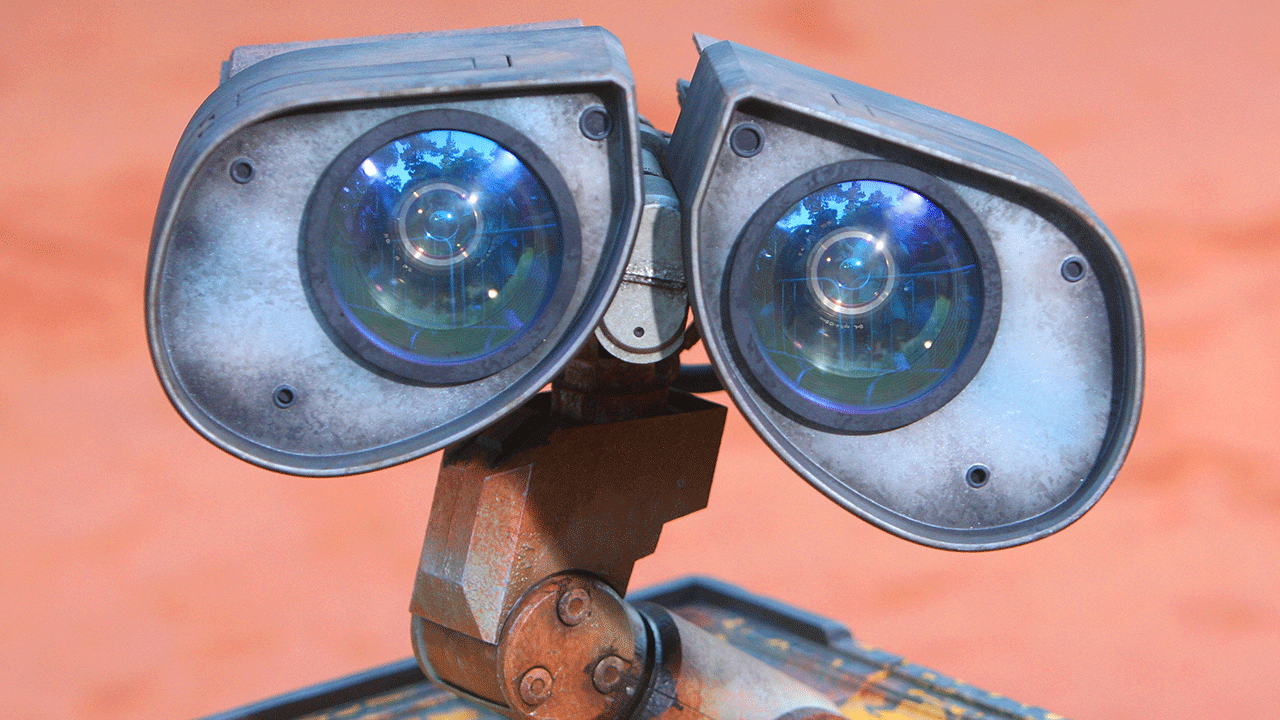What is artificial intelligence (AI)?
Artificial intelligence is a form of processing that simulates human intelligence via machine learning to carry out data analytics, natural language processing and more
Dating an AI? Artificial Intelligence dating app founder predicts the future of AI relationships: ‘Love’ and ‘loneliness’
Eugenia Kuyda defended AI companion bots during an interview with Fox News Digital and argued that dating app Replika is just one of many possible solutions to loneliness.
What is AI?
AI, or artificial intelligence, is a branch of computer science that is designed to understand and store human intelligence, mimic human capabilities including the completion of tasks, process human language and perform speech recognition. AI is the leading innovation in technology today and its primary goal is to eliminate tedious tasks and assist in immediately accessing extremely detailed and hyper-focused information and data.
AI has the ability to consume and process massive datasets and develop patterns to make predictions for the completion of future tasks.
While the interest in AI around the world is growing, the science poses an existential crisis for jobs, companies, whole industries and potentially human existence. In March, Goldman Sachs released a report and warned the public of the threat to jobs that AI, and ChatGPT, an artificial intelligence chatbot developed by AI research company OpenAI, poses. The report revealed that jobs with repetitive responsibilities and some manual labor are at risk for automation. The report concludes that 300 million jobs could be affected by AI.

Midjourney is an AI image program which creates realistic images based on text commands given by users. The company also released a "describe" feature this week which lets users transform images into words. (Thomas Trutschel/Photothek via Getty Images)
What is AI in simple words?
In simple terms, artificial intelligence is computer science that is capable of completing tasks that humans already perform or require human intelligence to complete.
AI uses technology to learn and recreate human tasks. Currently, in some situations, AI has the ability to perform human tasks better than we do, which poses a threat to the workforce.
While it may seem AI has only recently become popular or relevant to society, it has been used in many ways for years.
What are the 4 types of development for AI?
- Reactive Machines
- Limited Memory
- Theory of Mind
- Self-Awareness
1. Reactive Machines
Reactive machines are task specific and a basic form of AI. They react to the input provided to them and offer the same output. In the form of reactive machines, AI does not learn new concepts. These machines apply datasets and respond with recommendations based on already existing inputs.
An example of reactive machines is the recommendations section in Netflix. whereby TV shows and movies are recommended by the streaming service to a user based on their search and watch history.
FIVE DISTURBING EXAMPLES OF WHY AI IS NOT QUITE THERE
2. Limited Memory
Limited memory understands by storing previously captured and learned data and builds knowledge for the future based on its findings. An example of limited memory is self-driving cars.
Self-driving cars use signals and sensors to detect their surroundings and make driving decisions. The cars compute where pedestrians, traffic signals and low-light conditions exist, in order to drive more cautiously and avoid accidents or traffic errors.
3. Theory of Mind
Theory of mind means that humans have thoughts, feelings, emotions, desires, etc. that impact their day-to-day behaviors and decisions. While early adaptations of AI struggled with theory of mind, it has since made astonishing improvements. In order for AI to procure theory of mind, it must understand that everyone has feelings and develop the ability to change its behaviors as humans do.
An example of theory of mind for humans is to see a wilted plant and understand that it needs to be watered in order to survive. In order for AI to have theory of mind, it will need to do the same.
AI, ChatGPT specifically, has passed a theory of mind test commensurate with 9-year-old ability, as of February 2023.
4. Self-Awareness
Finally, when AI is self-aware, the stages of development will be complete. Self-awareness for AI is the most challenging of all AI types as the machines will have achieved human-level consciousness, emotions, empathy, etc. and can commiserate accordingly.
Once the machine has learned to be self-aware, it will have the ability to form its own identity.
This stage of self-awareness is not currently possible. In order for self-awareness to become a possibility, scientists will need to find a way to replicate consciousness in a machine.
WHAT ARE THE DANGERS OF AI? FIND OUT WHY PEOPLE ARE AFRAID OF ARTIFICIAL INTELLIGENCE

ChatGPT could pose a threat for various roles in the workforce and potentially take over some jobs that are repetitive in nature.
How is AI being used today?
Challenger, Gray & Christmas, a coaching company in Chicago, found in an April report that ChatGPT could replace 4.8 million jobs in the future. Specifically, ChatGPT is likely to replace job roles that are repetitive and predictable including copywriters, customer service representatives, cashiers, data clerks, drivers and more.
Individuals with graduate degrees are most fearful of losing their jobs to AI and nearly 69% of them emphasized their fear of it, according to a Tidio survey. While humans are becoming increasingly alarmed by AI, we are already using it in our daily lives in ways people might not even realize.
Here are some of the most popular and typical ways we’re already leveraging AI.
- Facial recognition
- Social media
- Search engines
- Voice assistants
- Smart devices
- Software with recommendations
ARTIFICIAL INTELLIGENCE QUIZ! HOW WELL DO YOU KNOW AI?
1. Facial recognition
Facial recognition is being used mostly by law enforcement to identify criminals and assess potential threats. Individuals use it daily to access smart devices and through social media like Facebook photo tag recommendations.
2. Social media
Determining violations of community guidelines, facial recognition, and translation tools for language interpretation are just a few of the ways social media is operating alongside AI.
3. Voice assistants
Google Home, Amazon Alexa and Apple Siri are all examples of voice assistants that employ AI. Voice assistants use natural language processing and are capable of discovering patterns and behaviors among users in order to conserve preferences and offer results to consumers. The more you use them, the more the voice assistant will learn.
ARE YOU READY FOR AI VOICE CLONING ON YOUR PHONE?

Examples of AI voice assistants include Siri, Alexa and Google Home.
4. Smart devices
Smart home devices are used in a variety of ways including the protection and security of your home. Technology like Ring doorbells and Nest security systems use AI to detect movement and alert homeowners.
Voice assistants like Siri and Alexa are also examples of smart devices.
5. Search engines
Search engines like Google, Bing and Baidu use AI to improve search results for users. Recommended content based on initial search terms are provided to users every time they search. Search engines use natural language processing, a branch of AI, to recognize search intent in order to provide exemplary results.
For example, if you search for "rose" results for the pink wine rose, the flower rose, Rose the singer or rose the verb may appear. When you provide context to your search, AI assimilates and suggests results.
If you’re using Google to query "Marylin Monrow," the search engine giant suggests the correct search term and results for "Marilyn Monroe." Search engines are using AI to grasp spelling, context, language and more in order to best satisfy users.
AI is also the power behind the rapid adaptation of search results. Trillions of searches are performed every year and humans don’t have the ability to comb through results – but AI does.
6. Software with recommendations
When you come home from a long day at work to relax on the couch and throw on Netflix, you’re leveraging AI to help you choose the next TV show or movie you’ll watch. When you log onto Instagram or Facebook and a suggested list of new followers or friends appears, you’re experiencing the power of AI. When you open your Google Maps app and type "gas" into the search bar to locate the closest gas station near you, you’re using AI to make your life easier.
AI AROUND THE WORLD: HOW THE US, EU, AND CHINA PLAN TO REGULATE AI SOFTWARE COMPANIES
What is narrow AI? (ANI)
Artificial narrow intelligence – or ANI – is also known as "Weak" AI. ANI systems are capable of handling singular or limited tasks and are the exact opposite of strong AI, which handles a wide range of tasks.
Example of ANI include Apple’s Siri, Netflix recommendations and the weather app where you can check the weather for the day or the week. While Siri has the ability to assist with numerous tasks like announce calls or text messages, play music, shortcut smart device apps and more, it struggles with tasks outside its immediate capabilities.
ANI systems are not self-aware or and do not possess genuine intelligence, according to deepAI.org.
ANI uses datasets with specific information to complete tasks and cannot go beyond the data provided to it Though systems like Siri are capable and sophisticated, they cannot be conscious, sentient or self-aware.
"LLMs have a broader set of capabilities than previous narrow AIs, but this breadth is limited," said Ben Goertzel, expert in Artificial General Intelligence, in a Fox News Digital Opinion article. "They cannot intelligently reason beyond their experience-base. They only appear broadly capable because their training base is really enormous and covers almost every aspect of human endeavor."
What is general AI? (AGI)
Artificial general intelligence – or AGI – is AI that can perform any intellectual task a human can, according to medium.com. AGI capabilities vary from consciousness to self-awareness. We have seen adaptations of life with AGI in movies like "Her" and "Wall-E."
In the Pixar animation film "Wall-E," the sad, lonely robot meets another, Eve, and they fall in love. In this film, while the characters are sentient, they are AGI systems. In addition to "Wall-E," the 2013 film "Her" stars Joaquin Phoenix. "Her" is also an AGI system as she outgrows her first owner and goes out to be on her own.
AGI systems learn, execute, reason, and more but do not experience consciousness.

(Films like "WALL-E" and "Her" show adaptations of general AI – or AGI.)
What is super AI? (ASI)
Artificial superintelligence – or ASI – is the type of AI most people are fearful of. It will have the ability to surpass human intelligence in a number of ways including creativity, self-awareness, problem-solving and more. ASI, if ever created, will have the ability to be sentient. While people are worried about AI becoming sentient, the technology is years away from such capabilities.
In 2018 at South by Southwest tech conference – SXSW – in Austin, Texas, Elon Musk expressed his concerns over AI and regulations regarding the development of ASI.
What is generative AI?
Generative artificial intelligence is technology with the ability to produce content including text, images and more. Generative AI like chatbots have the ability to complete a wide range of tasks including writing stories or recipes, answering questions from humans, ordering products and services and more. Examples of generative AI include chatbots like ChatGPT, Bard, Tongyi Qianwen and Ernie Bot.
Tech titans like Elon Musk and the CEO of ChatGPT, Sam Altman, are concerned about congressional oversight and regulation of generative AI across the U.S.
WHAT ARE SOME CONTROVERSIES SURROUNDING NATURAL LANGUAGE PROCESSING?
In March 2023, Musk signed a letter alongside other AI experts including Steve Wozniak, Emad Mostaque, researchers at Alphabet-owned DeepMind, Yoshua Bengio and Stuart Russell, and warned of advanced AI technology.
"Powerful AI systems should be developed only once we are confident that their effects will be positive and their risks will be manageable," said the letter. The computer programs that leverage AI and natural language processing are expected to impact the workforce significantly. Students are making use of generative AI to write essays and complete homework.
While beneficial, generative AI is also susceptible to bias and some worry it can become too human-like as it advances.
CLICK HERE TO GET THE FOX NEWS APP
Gary Marcus, a New York University professor, warned of generative AI to Congress in May: "they can and will create persuasive lies at a scale humanity has never seen before."
Marcus said, "outsiders will use them to affect our elections, insiders to manipulate our markets and our political systems. Democracy itself is threatened."


